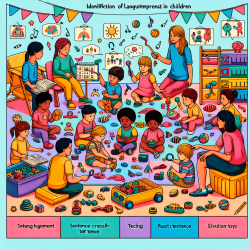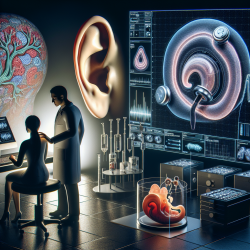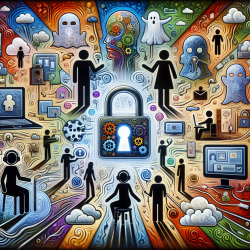Introduction
In the realm of speech-language pathology and child development, understanding the factors that influence children's behaviors is crucial. One area of interest is how social interactions among adolescents can impact their eating behaviors, a topic explored in the research article "Social interactions of eating behaviour among high school students: a cellular automata approach." This blog post will delve into the findings of this study and discuss how practitioners can apply these insights to foster healthier eating habits among students.
Understanding the Research
The study employs a Cellular Automata (CA) modeling approach to simulate the social interactions of high school students and their impact on eating behaviors. The model categorizes students into four states: Bring Healthy, Bring Unhealthy, Purchase Healthy, and Purchase Unhealthy. The research demonstrates that positive social and environmental influences can lead to a shift from unhealthy to healthy eating behaviors among students.
Key Findings
- Students with similar eating behaviors tend to form clusters, indicating the influence of peer groups.
- There is a critical point where positive and negative influences are balanced, leading to sharp changes in behavior.
- Positive social influences can encourage students to bring healthy foods from home, while negative influences may lead to unhealthy food choices.
Implications for Practitioners
For practitioners working with schools, these findings highlight the importance of fostering positive social environments. Here are some strategies to consider:
- Promote Positive Peer Influence: Encourage students to form groups that support healthy eating habits. This can be achieved through peer-led initiatives or mentorship programs.
- Implement School-wide Health Programs: Develop programs that involve both students and staff in promoting healthy eating. This could include workshops, cooking classes, or school gardens.
- Leverage Technology: Utilize online platforms to connect students with nutritionists or dietitians who can provide guidance and support.
Encouraging Further Research
While this study provides valuable insights, further research is needed to explore the complex interactions between social influences and eating behaviors. Practitioners are encouraged to collaborate with researchers to gather data and develop interventions tailored to their specific school environments.
Conclusion
Understanding the social dynamics that influence eating behaviors is essential for developing effective interventions. By applying the findings from this study, practitioners can create supportive environments that promote healthy eating among adolescents. For those interested in exploring this topic further, the original research paper can be accessed through this link: Social interactions of eating behaviour among high school students: a cellular automata approach.










